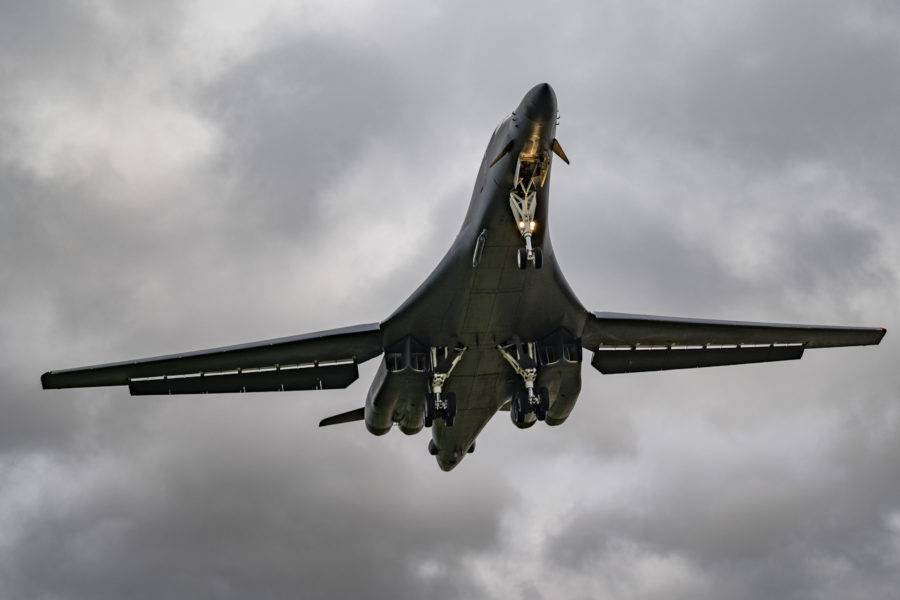As Russia threatens U.S. partners in Eastern Europe with another unexplained troop buildup, the 9th Expeditionary Bomb Squadron completed a six-week bomber task force mission Nov. 15 across the North Sea, Baltics, and Black Sea region, integrating coalition capabilities and practicing agile combat employment.
“We are building the agile combat employment framework alongside our allies and partners to launch a cohesive team, postured and ready, to respond to adversary aggression,” commander of U.S. Air Forces in Europe–Air Forces Africa Gen. Jeffrey L. Harrigian said at the conclusion of the mission, which saw integration of fourth- to fifth-generation aircraft, air refueling by partner nations, and use of isolated air bases in nontraditional areas.
The B-1B bombers and nearly 200 support personnel deployed to RAF Fairford, England, for the mission, using British ranges and flying with a variety of Royal Air Force platforms as well as those of other nations, including Turkish KC-135 refuelers and Norwegian F-35 Lightning II aircraft. The strategic bombers also integrated with Romanian, Polish, and Canadian fighters and supported the NATO Air Policing mission over Romania.
In coming days, Defense Secretary Lloyd J. Austin III is to meet with his Norwegian and Ukrainian counterparts as the Pentagon closely watches Russia’s latest troop buildup near Ukraine’s border.
“We do continue to see unusual military activity and concentration of forces in Russia, but near Ukrainian borders, and that remains concerning to us,” Pentagon Press Secretary John F. Kirby told reporters Nov. 15. “If you look at our exercise regimen, our exercises are defensive in nature, and they are in keeping with our alliances and partner commitments in the region.”
The Bomber Task Force Europe mission had been previously scheduled and was not directly related to the buildup.
Kirby said the intent of Russia’s movements are not clear.
“We put press releases out about them. We show photos and video of them. I talked about them every day here from the podium. I even will tell you what units are involved, what exercises they are going to be doing, and what capabilities they are going to be testing,” Kirby said of U.S. exercises. “There’s been no transparency from the Russian side about this concentration of forces in the western part of their country, and we continue to urge them to be transparent.”
The bomber task force missions that concluded focused on new tactics that allowed for intercept and escort training between coalition air forces, close air support to ground forces, and counter-maritime missions. U.S. Cyber Command protection also was tested, as was the first refueling with the Versatile Integrating Partner Equipment Refueling kit, a simplified new tool for refueling from coalition bases.
